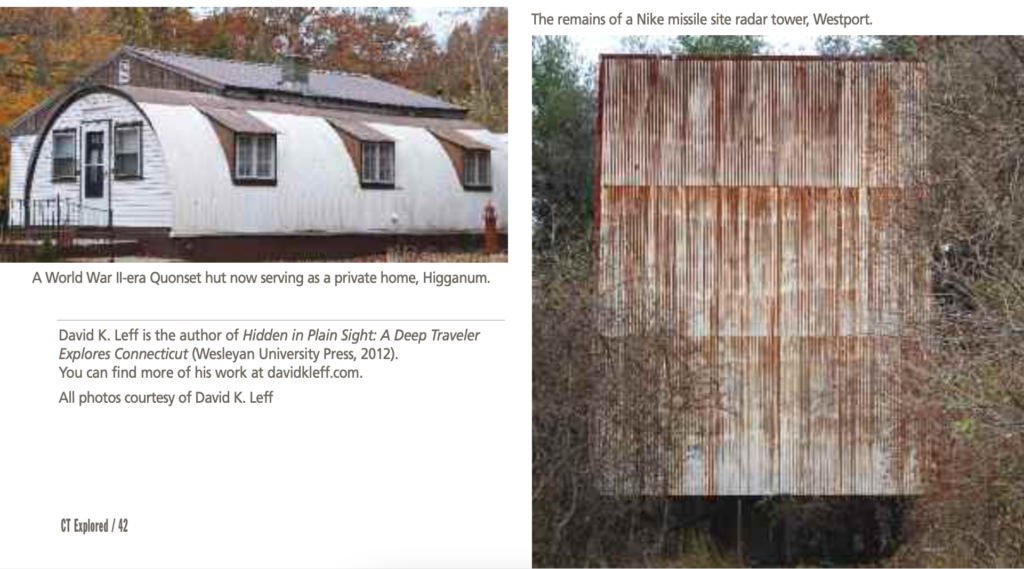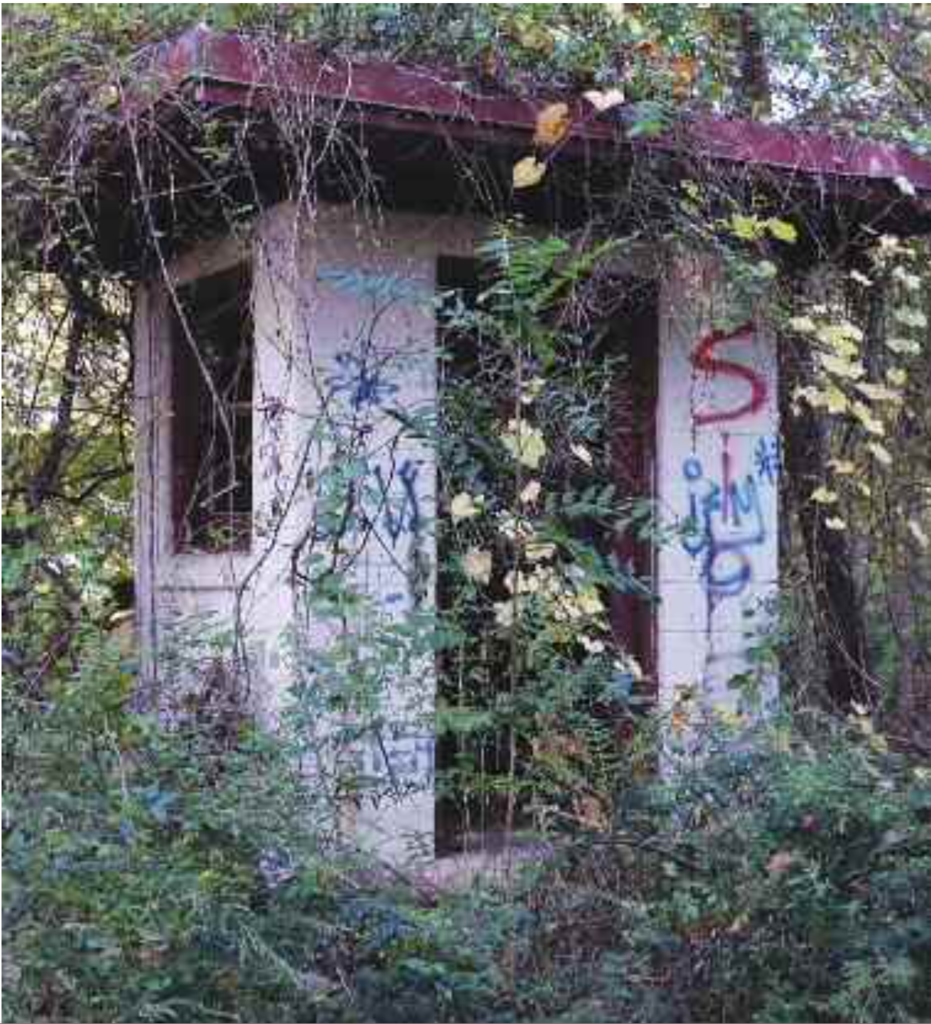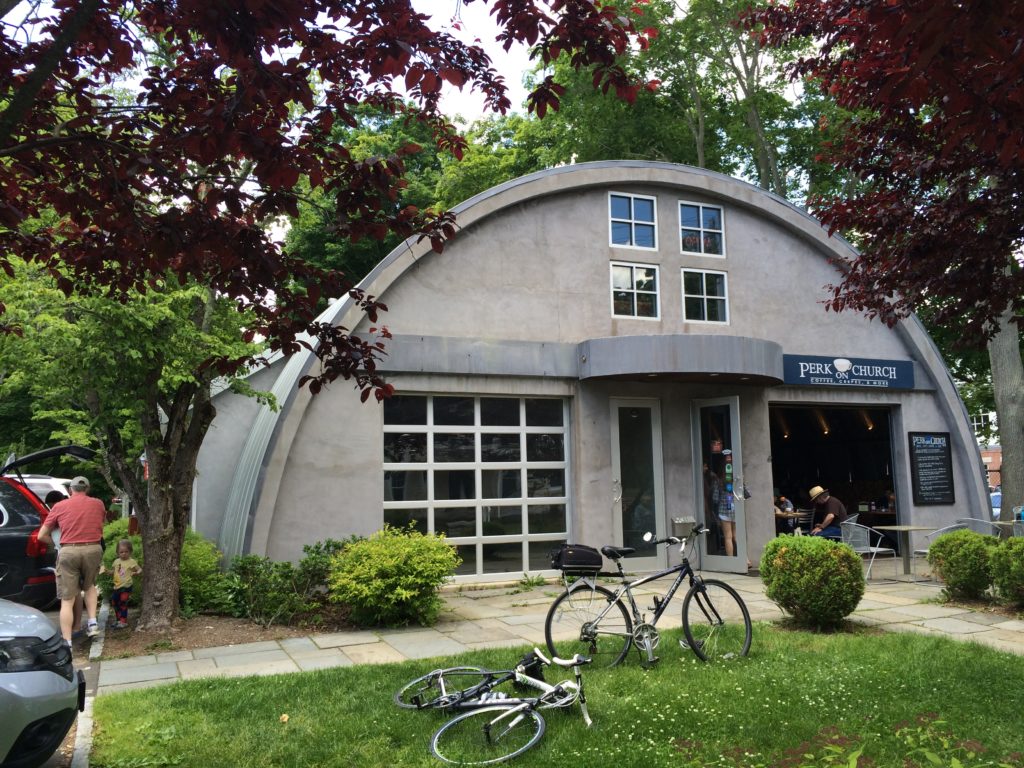By David K. Leff
(c) Connecticut Explored Inc. Spring 2013
Subscribe/Buy the Issue!
Little that we call history has vanished without a trace. In fact, clues as to much of what has happened before our time are so familiar that they are often hidden in plain sight.
Colonial houses, Civil War monuments, and old mills are the more visible symbols of our heritage, and in Connecticut we are delightfully rich in such structures. But not all of our meaningful past is so picturesque or venerable. Two of the most intriguing features of our landscape, Quonset huts and Nike missile bases, are strictly utilitarian and were constructed within living memory.
Quonset huts’ curved steel surfaces defy the rectangularity of classic New England architecture, even as they evidence Yankee ingenuity (they were first built by the military at Quonset Point, in Rhode Island) in a shape harking back to Indian longhouses. Half-round prefabricated steel structures that can be quickly assembled, Quonsets were all-purpose buildings widely used in World War II for everything from barracks to offices and chapels. Regardless of whether they fit our notions of historic architecture, they remind us of what it took to win the war, and they continue to be used throughout the state for storage and as homes, retail stores, and cafes. Among those still in use are several that serve as showrooms and stockrooms at Southworth’s Wayside Furniture in Torrington or the large Quonset that houses Perk on Church, a coffee shop on Guilford’s Church Street.

left: A World War II-era Quonset hut now serving as a private home, Higganum. photo: David K. Leff. Right:
The remains of a Nike missile site radar tower, Westport. photo: DavidK. Leff
No one would deny that the Cold War played an important role in our history, but how many of us have explored nearby Nike missile bases once established to protect us from Soviet bombers? Several remain in Connecticut, either reused or rotting away in the woods. Visitors to Manchester’s Nike Park or Westport’s Rolnick Observatory will find buildings, radar towers, and other structures that were once part of our military defense system.
Other intriguing examples are the 200-year-old mile markers lining many of our oldest two-lane blacktops, including U.S. routes 6, 202, and 44 and state routes 154, 85, and 10. Ancestors of today’s metal signs, these markers not only provided information about distances traveled but also facilitated commerce and communication. In their obsolescence, they provide a sense of time’s passage. Thousands drive by them daily, but few notice them as they pass. Look carefully along the edge of the road as you drive and you may find them in places as diverse as the front of Bristol’s Taco Bell on Route 6 or just outside the fence of Mt. Carmel Cemetery on Route 10 in Hamden.
From behind a windshield, sharp observers can spot octagon houses, roadside springs, castle-like homes, abandoned graveyards, old landfills, barns whose presence suggests disappearing land uses, and many other glimmers of our history. The number and variety of quirky historic wonders is limited only by our ability to see them. Caves, abandoned mines, repurposed churches, public fountains, fire towers, glacial boulders, and many other places and objects await discovery. The very street names gracing our neighborhoods can be read as a community biography telling stories of settlement, natural beauty, industry, and aspirations.
Those who know how to look can find intriguing elements of the past most everywhere. I call such practiced looking “deep travel,” a methodology for exploring any place with heightened awareness. Deep travelers recognize that places exist not just spatially but in time, and that they are sensitive to indicators of former activity. The more we see with depth the places where we live, work and visit, the more intriguing these places seem and the more connected to them we become. Such connections enrich and give meaning to daily life and nurture impulses to protect and improve those precincts of our explorations.
Ever want to visit a place endlessly lively and interesting, a spot with richly textured history, natural wonders, enchanting buildings, cultural marvels, and engaging characters? No need to pack your bags and catch a flight; Connecticut is a big place that belies its Lilliputian geography. Wonder beckons just beyond your doorstep!
David K. Leff is the author of Hidden in Plain Sight: A Deep Traveler Explores Connecticut (Wesleyan University Press, 2012). You can find more of his work at davidkleff.com.
Explore!
“Site Lines: Connecticut’s Octagon Houses,” Winter 2018-2019
“Mine Hill and the Lost Village of Chalybes,” Summer 2021


